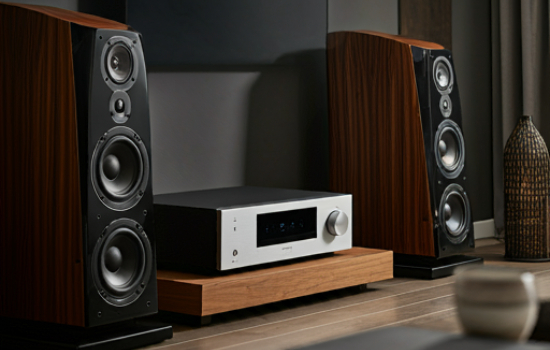Notifications
ALL BUSINESS
COMIDA
DIRECTORIES
ENTERTAINMENT
FINER THINGS
HEALTH
MARKETPLACE
MEMBER's ONLY
MONEY MATTER$
MOTIVATIONAL
NEWS & WEATHER
TECHNOLOGIA
TV NETWORKS
VIDEOS
VOTE USA 2026/2028
INVESTOR RELATIONS
COMING 2026 / 2027
ALL BUSINESS
COMIDA
DIRECTORIES
ENTERTAINMENT
FINER THINGS
HEALTH
MARKETPLACE
MEMBER's ONLY
MONEY MATTER$
MOTIVATIONAL
NEWS & WEATHER
TECHNOLOGIA
TV NETWORKS
VIDEOS
VOTE USA 2026/2028
INVESTOR RELATIONS
COMING 2026 / 2027
About Me
 Jhone Samith
Jhone Samith Denver Sight and Sound makes AV installation in Denver, Colorado easy. If you want to set up a home theater in Colorado, we are the solution.
 Jhone Samith -
Jan 24 -
Family & Home -
301 views -
0 Comments -
0 Likes -
0 Reviews
Jhone Samith -
Jan 24 -
Family & Home -
301 views -
0 Comments -
0 Likes -
0 Reviews

The power of audio in creating a truly immersive home entertainment experience is undeniable. Whether it’s the thumping bass of an action movie or the crisp clarity of a music track, the sound can make or break the experience. When it comes to setting up your own audio system, installing your speakers correctly is crucial for achieving high-quality sound. But many people don’t know where to start. How do you go from buying speakers to creating a sound system that feels as though it’s filling the room with dynamic sound? In this guide, we’ll walk you through how to install your speakers like a pro and unlock powerful audio in your home.
The key to great sound lies in proper speaker placement and installation. Even if you have high-quality speakers, poor installation can lead to disappointing audio. On the other hand, setting them up the right way—considering factors like positioning, room acoustics, and wiring—can make a world of difference.
Installing speakers like a pro involves understanding more than just plugging them in and turning up the volume. It requires planning, knowledge of acoustics, and attention to detail. Whether you’re working with a simple stereo setup or a full home theater system, these installation tips will ensure that you maximize your sound quality and achieve an audio experience that truly elevates your entertainment.
Before diving into the installation, it’s essential to choose the right speakers for your room. Different types of speakers are suited for various environments, and selecting the wrong one can impact your sound quality. The size of your room, the type of music or content you typically consume, and the amount of space you have for speaker placement will all influence your decision.
For larger rooms or a dedicated home theater, floor-standing speakers or bookshelf speakers are excellent options. These types of speakers deliver rich sound with powerful bass and clear highs. For smaller rooms, compact or wall-mounted speakers can provide impressive sound without taking up too much space. If you’re working with a small home theater room design, bookshelf or in-wall speakers might be the best choice to optimize both sound quality and space.
Before you start installing your speakers, it’s important to consider the acoustics of the room. Sound behaves differently in different spaces, and these behaviors will determine how well your speakers perform. Factors like room shape, the materials of your walls, flooring, and ceiling, and the presence of furniture all influence sound reflections, absorption, and diffusion.
For optimal sound, avoid placing speakers directly in corners, as this can amplify low frequencies and distort the sound. Likewise, hard surfaces such as tile or hardwood can create excessive reflections, leading to muddied audio. To counteract this, incorporate soft furnishings like rugs, curtains, and upholstered furniture to help absorb and diffuse the sound.
When designing a small home theater room, these elements are even more important. A smaller space tends to amplify the effects of sound reflections, so paying extra attention to speaker placement and acoustics will significantly enhance your audio experience. Additionally, consider acoustic treatments such as foam panels or bass traps to help manage sound waves.
Now that you’ve selected the right speakers and assessed the room’s acoustics, it’s time to plan your speaker placement. The positioning of your speakers can make or break the quality of your sound system, so getting it right is crucial.
The front left and right speakers are the primary drivers of most sound content. These speakers should be placed at ear level and positioned equidistant from the seating area. They should also be angled slightly toward the listening area to provide the most accurate soundstage. For a wider sound experience, try placing the speakers around 30 to 40 degrees apart.
The center channel speaker, which is primarily responsible for dialogue in movies and TV shows, should be placed directly above or below the screen, aligned with the left and right speakers. This alignment ensures a cohesive soundstage, with sound coming from the screen instead of off to the sides.
Surround speakers create an immersive audio experience, bringing depth and dimension to the sound. These speakers should be placed to the sides and behind the seating area, ideally at an angle between 100 and 120 degrees relative to the listener. If you have a 5.1 system, two surround speakers will be sufficient. For a 7.1 system, you’ll add two additional speakers for back surround sound.
The subwoofer handles low frequencies like bass and rumbling effects. Subwoofers are less directional than other speakers, meaning they can be placed in different areas without drastically affecting the sound. The key is to avoid placing it in a corner, where it may produce overly pronounced bass. Try placing it along a wall or near the front of the room. You can experiment with its placement using a method called the "subwoofer crawl," where you place the subwoofer in your listening position, play a bass-heavy track, and crawl around the room to find the spot with the best bass response.
Once the speakers are placed, the next step is to connect them to your amplifier or receiver. Wiring is one of the most important aspects of installation, as poor connections can lead to audio distortions, poor signal quality, or even damage to your equipment.
Choose a speaker wire with the appropriate gauge for your setup. For most home audio systems, 16-gauge wire is sufficient, but if you’re running long cables (over 50 feet), you may want to use thicker wire (12 or 14-gauge) to minimize signal loss. Make sure you’re using high-quality wire to ensure the best audio signal possible.
Speaker wires can clutter your space, but there are several ways to hide them and keep your setup neat. For a clean look, consider using wire management systems, such as cable raceways or cord covers, which can be mounted along baseboards or walls. Alternatively, if you’re installing speakers in-wall or in-ceiling, you can run the cables behind the drywall for a more permanent, clean look.
If you're unsure about the best way to wire your system or need help running cables, searching for "speaker installation near me" can help you find professional technicians who can manage the installation with ease.
Once the speakers are installed and wired, it's time to calibrate the system to ensure optimal sound quality. Many modern receivers come with automatic calibration tools that can measure the acoustics of your room and adjust the speaker levels accordingly. However, you can also manually adjust settings to fine-tune the sound for your preferences.
Start by setting all your speakers to the same level, then use your receiver’s calibration tool to adjust the volume of each speaker. The goal is to create a balanced soundfield where no speaker overpowers the others. The center channel should be aligned with the left and right speakers, and the surround speakers should be slightly quieter than the front speakers to create a more immersive effect.
Subwoofer calibration is crucial because improper settings can result in either too much bass or not enough. Adjust the volume and crossover settings on your subwoofer to blend it smoothly with your other speakers. You may need to experiment with the settings to find the right balance, as bass can sometimes overpower the rest of the audio.
After completing the installation and calibration, it’s time to test your system. Play a variety of content—movies, music, and action scenes—to see how your speakers perform. Pay attention to how the sound shifts as you move around the room and make adjustments as needed. Small tweaks to the placement or calibration can significantly improve the overall experience.
Installing your speakers like a pro takes a combination of planning, knowledge, and careful execution. By understanding speaker placement, room acoustics, and proper wiring, you can unleash the full power of your audio system and enjoy high-quality sound that brings your entertainment to life.
If you’re unsure about the installation process or need professional assistance, don’t hesitate to search for “speaker installation near me” to find experts who can help. And for those designing a small home theater, paying close attention to small home theater room design ideas can help optimize both the aesthetic and audio performance of your space. Follow these tips, and you’ll be well on your way to creating an audio experience that rivals that of any professional theater system.
